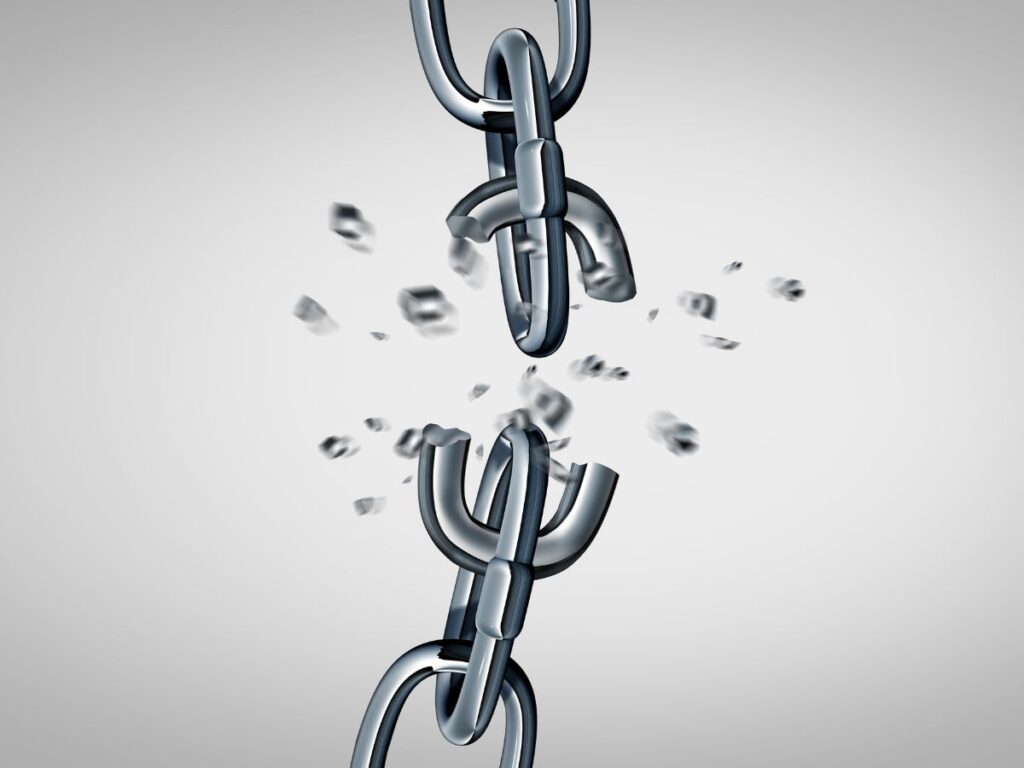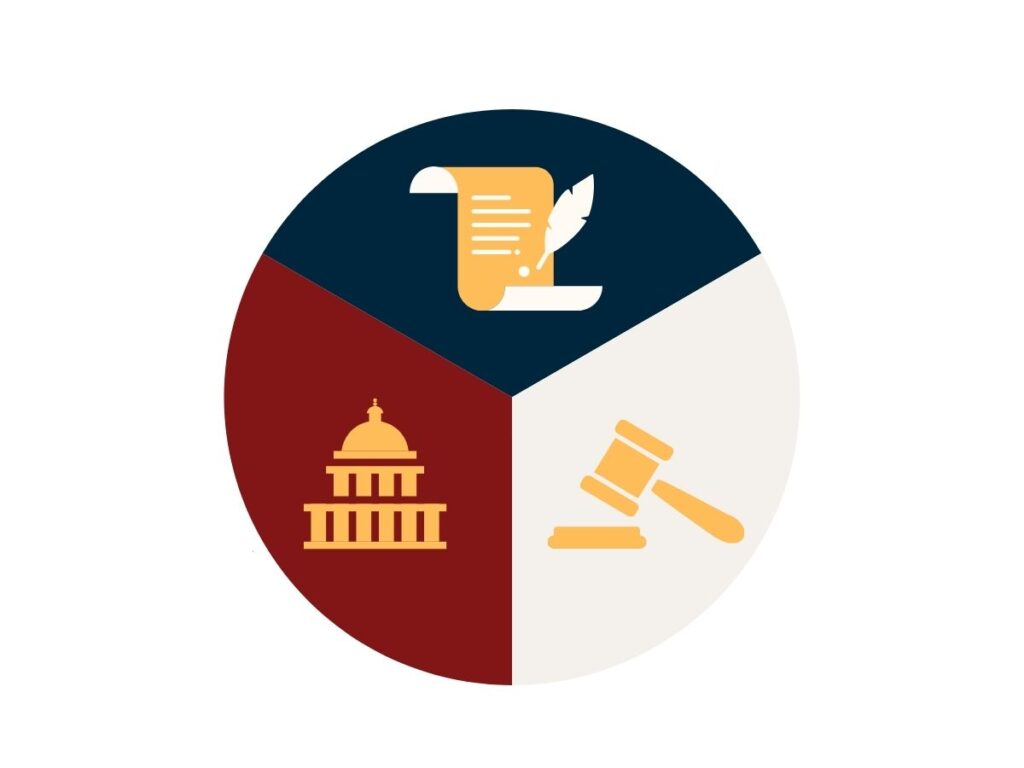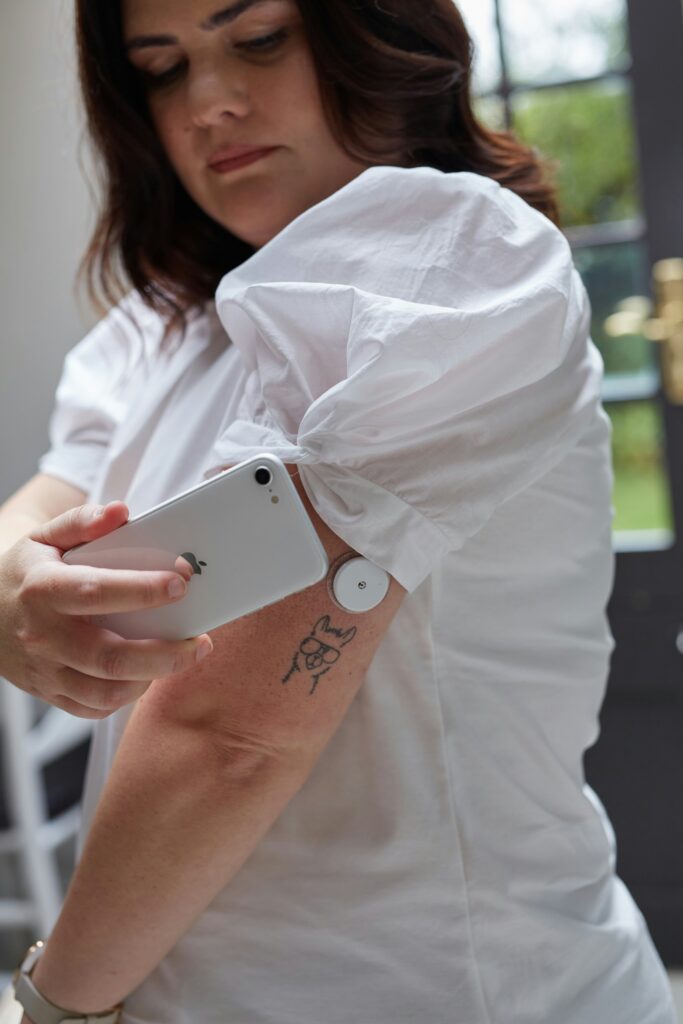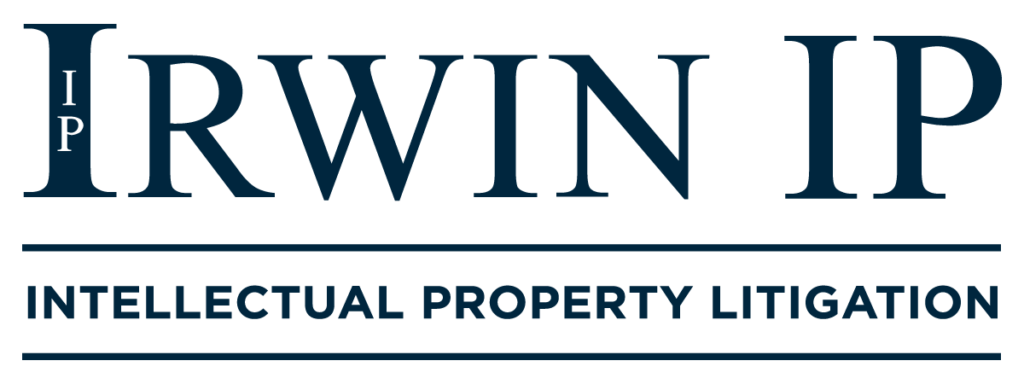Irwin IP LLP is pleased to announce that four attorneys have earned recognition in the 2025 edition of The Best Lawyers in America®. Since it was first published in 1983, Best Lawyers has become universally regarded as the definitive guide to legal excellence.
“Best Lawyers was founded in 1981 with the purpose of highlighting the extraordinary accomplishments of those in the legal profession,” said Best Lawyers CEO Phillip Greer. “We are proud to continue to serve as the most reliable, unbiased source of legal referrals worldwide.”
Best Lawyers has earned the respect of the profession, the media, and the public as the most reliable, unbiased source of legal referrals. Its first international list was published in 2006 and since then has grown to provide lists in over 75 countries.
Lawyers on The Best Lawyers in America list are divided by geographic region and practice areas. They are reviewed by their peers based on professional expertise and undergo an authentication process to make sure they are in current practice and in good standing.
Irwin IP LLP would like to congratulate the following lawyers named to the 2025 The Best Lawyers in America list:
- Barry F. Irwin – Copyright Law, Litigation – Intellectual Property, Litigation – Patent, Patent Law, and Trademark Law
- Jason Keener – Litigation – Intellectual Property
- Robyn Bowland – Intellectual Property
- Reid Huefner – Patent Law
We are incredibly proud of the impact our attorneys have made, and we celebrate their dedication to excellence and the high standards they uphold in the legal profession.
On July 10, 2024, the Third Circuit vacated and remanded the district court’s decision to award attorneys’ fees to plaintiff Lontex, a sports apparel brand whose registered COOL COMPRESSION mark was used by Nike on its Nike Pro clothing line, finding that the district court’s determination that the case was “exceptional” was incorrectly rooted in broad policy considerations rather than facts specific to the case.

Lontex registered the COOL COMPRESSION mark with the United States Patent and Trademark Office in 2008 for athletic apparel. In 2015, Nike began using the phrase “cool compression” with its Nike Pro clothing. In 2016, Lontex demanded that Nike stop using Lontex’s mark on nike.com and with its distributors. Lontex eventually sued Nike claiming, among other things, that Nike was guilty of trademark infringement and contributory trademark infringement. Ultimately, the jury found Nike liable for willful and contributory infringement, and the district court granted Lontex’s request for treble damages and awarded Lontex attorneys’ fees of almost $5 million.
The Third Circuit affirmed the district court’s findings of willful and contributory infringement, as well as the punitive damages finding. However, the Third Circuit rejected the award of attorneys’ fees, finding that the district court failed to apply the facts to the correct caselaw and instead, relied on policy to justify its award of attorneys’ fees. More specifically, the district court justified its fee award based on the following reasons: (1) that the enforcement of trademarks is important; (2) that Lontex is a small company that took on Nike who has greater resources; and (3) that trademark cases are expensive to litigate, thus “as a matter of policy” it is unrealistic to expect a small company to pay for legal fees for this type of case.
The Third Circuit held that in order to support an award of attorneys’ fees, the case must be “exceptional” so that it “stands out from others with respect to the substantive strength of a party’s litigating position (considering both the governing law and the facts of the case) or the unreasonable manner in which the case was litigated.”1 The Third Circuit rejected the district court’s first reason—that enforcing trademarks is important—stating that this “truism does nothing to distinguish this case from any other trademark case.” Second, the Third Circuit rejected the district court’s “David and Goliath” matchup justification because it failed to provide additional evidence of Nike engaging in improper or unreasonable litigation tactics. Third, the Third Circuit found that the district court failed to address the possibility of Lontex receiving outside litigation funding when concluding that it is unrealistic for a small company like Lontex to pay the legal fees for this type of case. Finally, the district court’s brief mention of the substantive strength of Lontex’s case did not entail enough facts to find “exceptionality.” On remand, the district court was instructed to rely on the law outlined in Fair Wind Sailing, Inc. and Octane Fitness, LLC, and provide specific fact-based evidence to support its conclusion that this is an exceptional case justifying the award of attorneys’ fees.
Despite the district court’s compelling justifications for a finding of willful and contributory infringement, the lack of inclusion of those specific facts in determining the award of attorneys’ fees could not sustain the fee award on appeal. Accordingly, when arguing for attorneys’ fees, parties must emphasize the specific facts of their circumstances to prove “exceptionality” of their case. Bare policy considerations, although perhaps justified, will not support an award of attorneys’ fees.

On Friday, Irwin IP gave back to the community by volunteering at the Greater Chicago Food Depository. Together, we packed a total of 24,580 meals, assembling 29,497 lbs. and 1,124 cases of food, averaging 492 meals per volunteer! Irwin IP is proud to support and make a positive impact in our community.
Our company culture emphasizes community service beyond our commitment to pro bono legal work. We engage in various volunteer activities throughout the greater Chicago area. Annually, we organize two firmwide volunteer events, one in the summer and one in the fall. We also encourage our employees to contribute their time and skills to causes they are passionate about. Our team regularly volunteers with organizations such as The Alliance for the Great Lakes, Feed My Starving Children, Connections for the Homeless, United Way of Metro Chicago, and the Greater Chicago Food Depository.
——–
Irwin IP specializes in mission-critical intellectual property and technology litigation, catering to a diverse client base, including Fortune 500 companies and innovative startups. Our expertise extends to enforcing and protecting intellectual property portfolios, ensuring our clients’ product lines, worth hundreds of millions annually, remain secure. Notably, we routinely, successfully litigate against the largest, most prestigious law firms representing the largest companies in the world on matters valued in the tens and hundreds of millions.
The 7th Circuit recently upheld an arbitration award and found that royalties may be collected after the expiration of the related patent(s) if those royalties were not directly tied to the related patents. After an arbitration panel found that an amendment to the parties’ agreement disconnected the patented technology from any royalties owed, the 7th Circuit—bound by the arbitration panel’s interpretation of the agreement—affirmed the district court’s ruling. The 7th Circuit explained that because the patented rights had been disconnected and because the arbitration award did not run afoul of any explicit, well-defined, and dominant public policy, the Court has “no power to unwind that holding here.”

Over 30 years ago, Dr. John Insall developed technology and obtained patents related to knee reconstruction and replacement. Dr. Insall licensed his technology to Zimmer Biomet Holdings, agreeing that Zimmer would “make royalty payments to Insall until ‘the expiration of the last to expire of the patents licensed hereunder or so long as Product is sold by ZIMMER, whichever is last to occur.’” In 1998, the agreement was amended, stating “royalties shall be paid … on all sales of the NexGen Knee and all subsequently developed articles, devices or components marketed by Zimmer.” After the last patent’s expiration in early 2018, Zimmer argued it need not pay royalties on expired patents and Dr. Insall’s estate argued payments should continue because the 1998 amendment no longer tied royalties to patented technology. The parties entered arbitration, with the Arbitration Panel finding that the royalties were no longer based on the sales of products containing the patented technology, but rather the sales of items marketed as “NexGen Knee” products. Interestingly, the panel found that the original agreement’s reference to either the patents or products was sufficient to tie the royalties to the patented technology and render any post, patent expiration royalties unenforceable.
The Supreme Court explained in Brulotte that patent license agreements are unenforceable after the expiration of the included patents. The Supreme Court later clarified in Kimble that “post-expiration royalties are allowable so long as tied to a non-patent right—even when closely related to a patent.” Although review of arbitration rulings is quite limited, the 7th Circuit explained that it can vacate an arbitration award if the award violates an “explicit, well-defined, and dominant public policy.” The 7th Circuit reasoned that because the panel found the royalties were tied to a non-patent right, the post-expiration royalty was permissible and that the Court need not consider whether there is public policy against royalties after a patent’s expiration because the royalties were no longer grounded in the patent.
Given the Supreme Court’s clarification in Kimble and the 7th Circuit’s ruling here, contract drafters should be wary when amending any royalty provisions. If a party intends to cease royalty payments after the expiration of a patent, the contract should tie the royalty to that patented technology.
On June 28, 2024, the U.S. Supreme Court issued a landmark decision in Loper Bright Enterprises v. Raimondo, changing the way courts must review a governmental agency’s interpretation of an ambiguous statute. The Court held that courts must review an agency’s interpretation of an ambiguous statute using a de novo standard. Loper Bright overruled Chevron v. National Resources Defense Council, Inc., a decades-old case that instructed courts to give deference to an agency’s interpretation of an ambiguous statute as long it was a “permissible” interpretation. In the tug-of-war underlying whether agencies or courts should interpret ambiguous statutes, Loper Bright represents a strong pull in the courts’ direction.

Loper Bright dealt with the Magnuson-Stevens Fishery Conservation and Management Act, but the decision reaches any federal agency’s interpretation of a statute, including the Patent Trial and Appeal Board of the U.S. Patent and Trademark Office (“PTAB”). On July 10, 2024, the Supreme Court requested a response to a petition for certiorari filed by United Therapeutics Corporation (“UTC”). UTC presented two questions in its petition: (1) whether the standard of review should be de novo or abuse of discretion for the PTAB’s reliance on new grounds and prior art not raised in an initial inter partes review (“IPR”) petition, and (2) whether the Supreme Court should overrule Chevron. Although UTC’s second question has now been answered by Loper Bright, its first question puts the new Loper Bright spotlight directly on the PTAB.
UTC’s petition for certiorari stems from an IPR petition filed by Liquida Technologies against one of UTC’s patents asserting that the patent was invalid as obvious in view of another patent and two journal abstracts. After UTC responded to Liquida’s IPR petition, Liquida raised new, but related, prior art in its reply. UTC contends that Liquida’s raising of new prior art in its reply violated 35 U.S.C. § 312(a), which provides that an IPR petition must identify “in writing and with particularity” the prior art asserted to render a claim unpatentable. Over UTC’s objections, the PTAB considered the new prior art and invalidated UTC’s patent as obvious. UTC appealed to the Federal Circuit, which reviewed the PTAB’s decision under an “abuse of discretion” standard, ultimately finding the new prior art admissible because the “[PTAB] has discretion to determine” whether an IPR petition “identified the specific evidence” required by § 312(a).
In its petition for certiorari, UTC argues that PTAB exceeded its statutory authority by considering prior art not raised in the petition. UTC further asserts that the Federal Circuit did not ground its decision in statutory text or precedent, and that if it had reviewed the PTAB’s decision de novo (as now required by Loper Bright) the outcome would have been different. Liquida’s response to UTC’s petition for certiorari is due August 12, 2024. This is likely one of many challenges to come regarding USPTO and PTAB decisions that implicate statutory interpretation.
Irwin IP attorneys are closely monitoring UTC’s appeal at the Supreme Court and will provide updates as the case unfolds.
The Seventh Circuit has opened the flood gates by allowing trade secret owners to recover damages for foreign sales of products using misappropriated trade secrets. On July 2, 2024, the Seventh Circuit affirmed a district court’s decision that the Defend Trade Secrets Act (“DTSA”) applied extraterritorially, allowing the plaintiff to recoup $407.4 million in damages from worldwide sales.
Motorola Solutions, Inc. (“Motorola”) and Hytera Communications Corporation Ltd (“Hytera”) both compete within the two-way, high-end digital radio market. In an attempt to gain a competitive edge over Motorola, Hytera convinced three Motorola engineers in Malaysia to steal thousands of files containing Motorola’s trade secrets. Hytera used Motorola’s trade secrets to develop and then sell functionally indistinguishable radios worldwide. In 2017, Motorola sued Hytera for trade secret misappropriation. A jury found that Hytera violated the DTSA, and Motorola was awarded $407.4 million in damages, which included foreign sales. Hytera appealed the damages award.
As background, in 1996, Congress enacted the Economic Espionage Act (“EEA”) that criminalized the theft of trade secrets. The EEA was codified as Chapter 90 of Title 18 of the United States Code. Section 1837 of Chapter 90 provides that “[t]his chapter also applies to conduct occurring outside the United States if . . . an act in furtherance of the offense was committed in the United States.” In 2016, Congress added the DTSA to Chapter 90, which provided a civil cause of action for trade secret misappropriation.

On appeal, Hytera argued that generally the DTSA did not apply extraterritoriality, and specifically that Section 1837 did not apply to the DTSA because it used the term “offense,” which only applied to criminal acts under the EEA. The Seventh Circuit rejected this argument holding that because Congress added the DTSA to Chapter 90, which already applied extraterritorially via Section 1837, Congress meant for the DTSA to have an extraterritorial reach too. Further, the Seventh Circuit explained the term “offense” is applicable to both civil and criminal offenses, and the fact that Congress did not amend Section 1837 to remove the introductory phrase “this chapter” meant that Section 1837 applied to all offenses in Chapter 90, including criminal and civil actions.
Hytera also argued that Section 1837’s “act in furtherance” language required Hytera to have acquired Motorola’s trade secrets within the U.S. for extraterritoriality to apply. The Seventh Circuit rejected that argument holding that Section 1837 does not require a completed act of domestic misappropriation or any causation between the domestic act and the foreign sales for which damages are sought. Instead, the Seventh Circuit stated that any disclosure or use of the misappropriated trade secret in the U.S. satisfies this clause as it is part of the “conspiracy” to misappropriate the trade secrets. The Seventh Circuit then affirmed the damages award that included Hytera’s foreign sales because Hytera used the trade secrets at a trade show in the U.S., and even though the trade show use was unrelated to the foreign sales, it was part of the same conspiracy to misappropriate Motorola’s trade secrets.
By allowing plaintiffs to recoup damages for foreign sales, many businesses should consider the impact of foreign activity in misappropriation claims. The availability of damages for foreign activity may lead businesses to aggressively pursue trade secret litigation in the U.S. under the DTSA. Conversely, businesses should be mindful of their foreign activity as it may used against them in future trade secret misappropriation cases in the U.S.
We are excited to welcome Daniel Juarez as the new IT Support Specialist at Irwin IP. Daniel brings extensive experience in IT systems management and security.
In his role at Irwin IP, Daniel ensures our technology systems operate efficiently and meet strict security standards, coordinates with vendors to enhance system performance and reliability, and addresses daily IT challenges.
Daniel earned a Bachelor of Computer Science from Lewis University, equipping him with valuable skills in programming and IT management. Committed to innovation, Daniel is dedicated to keeping Irwin IP at the forefront of technology solutions.

On June 21, 2024, the Federal Circuit affirmed the District Court for the District of New Jersey’s dismissal of Beteiro, LLC’s (“Beteiro’s”) patent infringement case against DraftKings, Inc. (“DraftKings”) on the basis that Beteiro’s patents claimed unpatentable subject matter under 35 U.S.C. §101. Beteiro had alleged that DraftKings’ online gambling platform infringed four Beteiro patents sharing identical specifications related to using computers and GPS devices to verify user locations and ensure compliance with gambling laws. Of importance in this decision is (1) the court’s discussion of Beteiro’s failure to tie the alleged inventive concept to the patents’ specification to overcome step two of the Alice test and (2) the lack of deference to an Examiner’s prior consideration of the patentability issue.
Applying the two-part Alice/Mayo patent-eligibility test, the Federal Circuit first considered whether the patent claims were directed to an abstract idea. It found step one to be satisfied. The Court ruled that Beteiro’s claims were directed to the abstract idea of “exchanging information concerning a bet and allowing or disallowing the bet” based on the user’s location. The Court also noted that the claims used generic steps like “detecting information,” “transmitting a notification,” “receiving a message,” and “determining … and processing information.” As such, the claims were drafted in result-focused language without any specificity of how to achieve them. The Court analogized these claims with prior cases where similar methods of providing information based on locations were found to be abstract.
Next the Court analyzed step two of Alice, which considers whether the patent claims contain an “inventive concept” that transforms the claims into subject matter that goes beyond the ordinary. Here, Beteiro alleged that the inventive concept, using GPS technology in personal communication devices, was uncommon at the time of the patents’ 2002 priority date. The Court rejected this argument, finding that the specification belied this argument. Specifically, only 15 lines out of the specification’s voluminous 98 column disclosure dealt with this subject which, to the Court, indicated that the inventors themselves thought there was no advanced GPS or mobile device technology being disclosed and that a person of ordinary skill in the art would know GPS technology in connection with a mobile device. Since Beteiro did not make other claims of inventiveness, its conclusory allegations were insufficient to defeat a motion to dismiss because they were “wholly divorced from the claims or the specification.”
During patent prosecution of the asserted patents, the patent Examiner had expressly considered three of Beteiro’s patents eligible under 35 U.S.C. §101 because they used a particular machine or processor. However, the Federal Circuit disregarded Beteiro’s argument that the patent Examiner’s consideration of patent eligibility should be afforded deference because an Examiner’s consideration of a particular argument does not “in any way shield the patent’s claims from Article III review for patent eligibility.”
As Beteiro illustrates, patent owners should ensure that their patent specification has a detailed description of the inventive concept to overcome 35 U.S.C. §101 challenges. Further, patent owners should not expect much deference to any Examiner’s discussion of patent eligibility during prosecution.

The Court of Appeals for the Federal Circuit (“CAFC”) recently reversed the U.S. District Court for the District of Massachusetts (“District Court”)’s grant of a preliminary injunction against EOFlow, a medical device manufacturer that makes insulin pump patches. Insulet, also a manufacturer of insulin pump patches (the “OmniPod”) sought the injunction to prevent EOFlow from making or selling its products on grounds that they misappropriated Insulet’s trade secrets. Insulet alleged it would be irreparably harmed by EOFlow’s impending merger with Medtronic. The CAFC held that, in analyzing the four-factor Winter test for preliminary injunctions, the District Court abused its discretion in at least six ways.
Courts evaluate whether to grant a preliminary injunction, “an extraordinary remedy that may only be awarded upon a clear showing that the plaintiff is entitled such a relief,” based upon four factors (the Winter factors): (1) likelihood of success on the merits, (2) likelihood of irreparable harm; (3) the balance of equities and hardships; and (4) whether injunction is in the public interest.
On the likelihood of success on the merits, the CAFC held the District Court abused its discretion by (1) failing to consider whether the trade secret claim was time-barred, (2) applying a sweeping, “severely overbroad” definition of the claimant’s “trade secrets,” which included all information marked as “Confidential” and specifications, drawings, and CAD files related to the OmniPod, (3) failing to consider publicly accessible information about the OmniPod, including patent disclosures, and (4) erroneously stating that the capability for a product to be reverse engineered was insufficient to defeat trade secret protection. The CAFC further found that the harm to EOFlow from the overbroad trade secrets was “compounded” by “the [D]istrict [C]ourt’s position that ‘it would be unfair to require at this stage perfection as to the precise number and contours of the trade secrets at issue,’” leading it to “advanc[e] a hazy grouping of information that [it] did not probe with particularity to determine, what, if anything, was deserving of trade secret protection.” On the irreparable harm factor, the CAFC found that the District Court abused its discretion by relying on “mere conjecture” when it came to determining competitive harm via loss of market share. And on the public interest factor, the CAFC held the District Court abused its discretion by failing to “meaningfully engage with the public interest prong.”
It is atypical for an appellate court to so comprehensively dismantle an analysis when it could have stopped after the first error, but the CAFC seems to be sending trade secret plaintiffs a message. It is common for plaintiffs to advance an “aggressive” interpretation of trade secret law, demanding relief while refusing to identify their trade secrets with particularity. This denies the defense knowledge of what they are even fighting as well as giving the plaintiff flexibility to identify its trade secrets as whatever they find that the defendant took. But, courts have been suspicious of this strategy for decades as they struggled to balance trade secrets policies. See DeRubeis v. Witten Techs., Inc., 244 F.R.D. 676, 680-81 (N.D. Ga. 2007). Insulet led the District Court to strike the wrong balance, running well afoul of the law, and its luck ran out on appeal. The lesson here for trade secret plaintiffs is to put their cards on the table.
Check out this Law360 article by two of our attorneys at Irwin IP, Joseph Marinelli and Suet Lee.
Their article delves into the recent decision by the Federal Circuit in Intellectual Tech LLC v. Zebra Technologies Corp., providing crucial insights into the complex issue of constitutional standing in patent cases where patents were used as a security in defaulted loan agreements.
